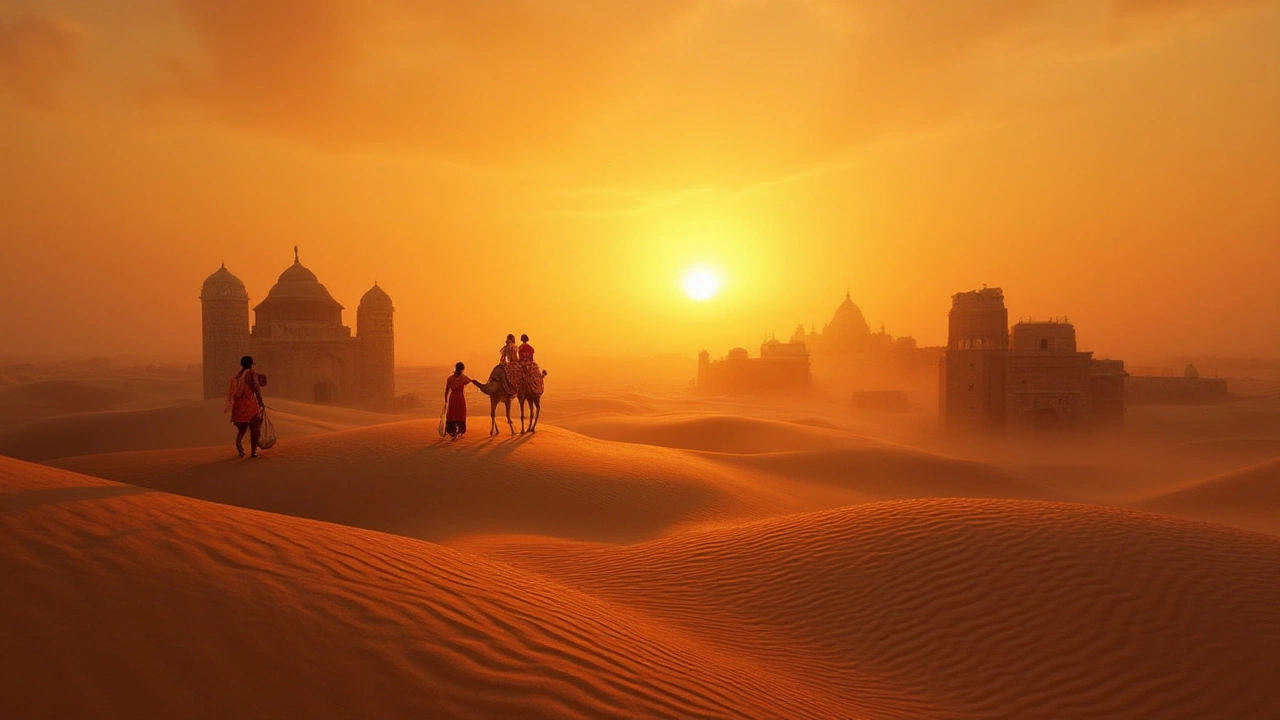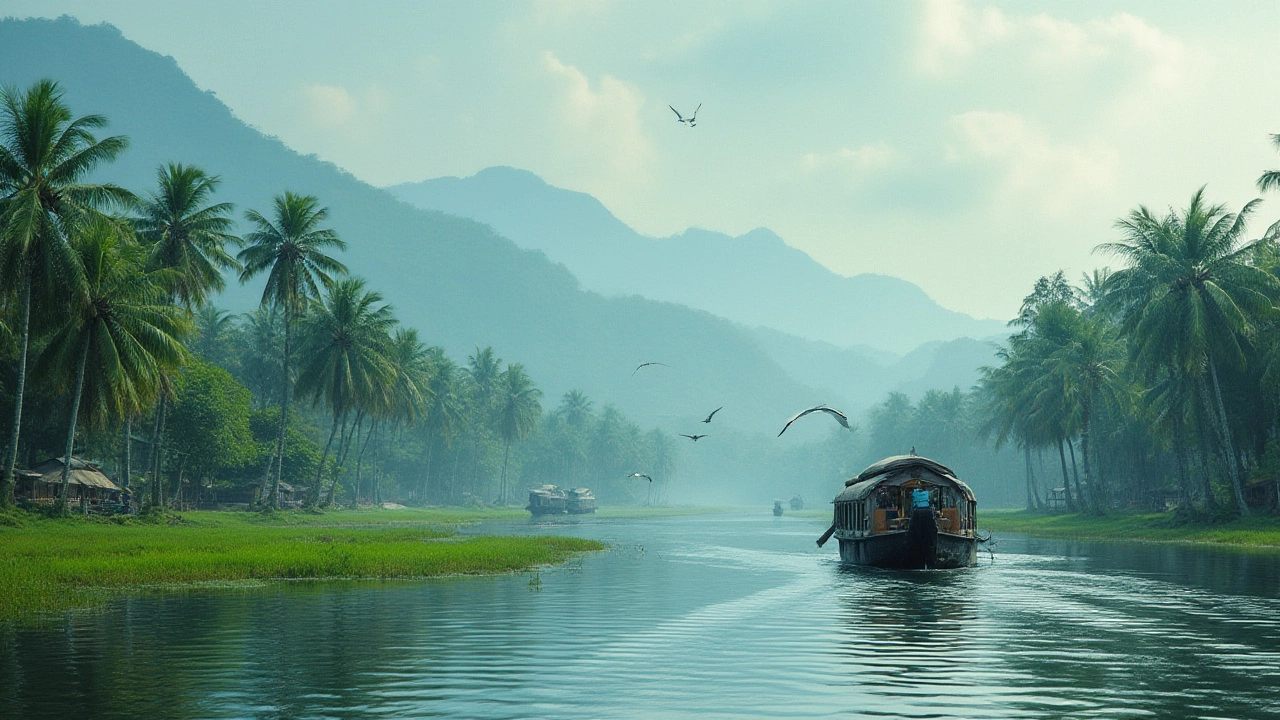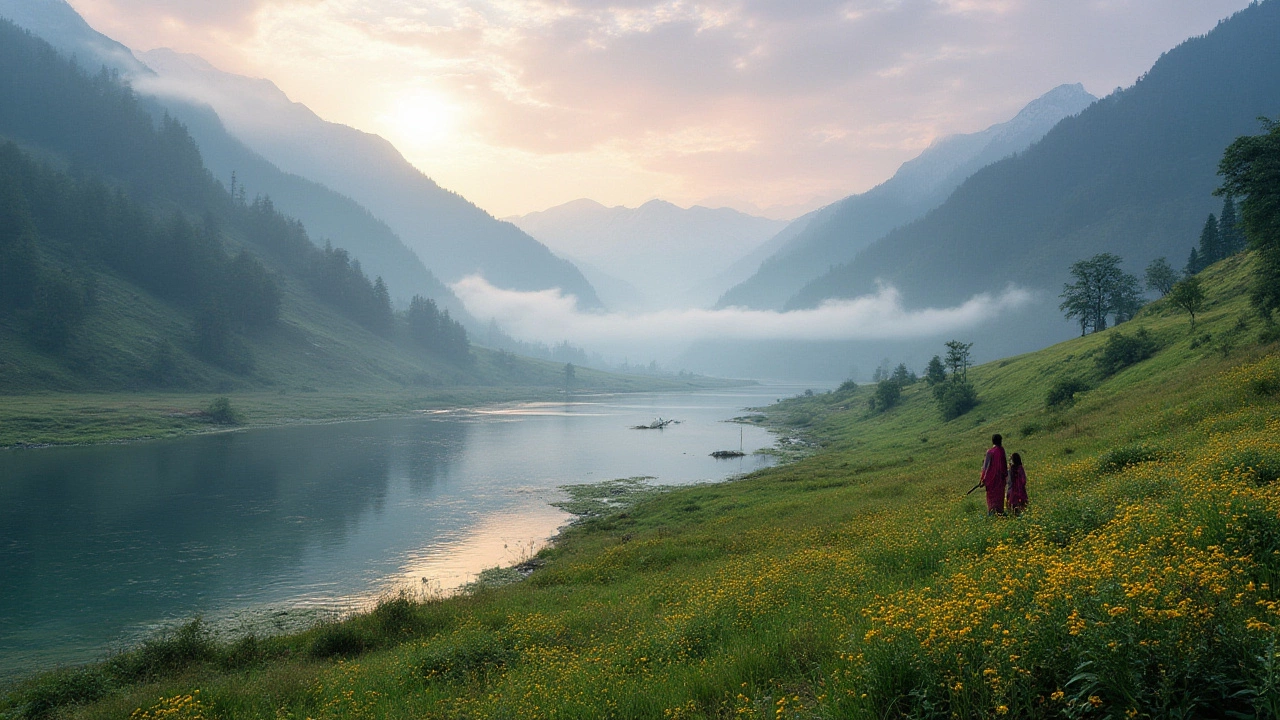If you ask five Indians which part of their country is the most beautiful, you’ll get seven different answers. That’s both the problem and the magic. India isn’t just big, it’s wild with contrasts—from glacial peaks to tropical beaches, and you can visit a fairy-tale forest and a sun-scorched salt desert within a week. Even my son Linus, who’s picky about everything from pizza toppings to playlist order, can’t agree with himself on where the real wow factor lies.
Kashmir: Nature’s Poetry in the North
Paintings never quite catch it. Kashmir sits between raw mountains and rolling valleys—the kind of scene where you half-expect to see an artist with an easel or a poet humming to himself. The Dal Lake in summer is a living mosaic: houseboats with flowerboxes, shikaras (those paddle boats with their rainbow canopies), and Himalayan peaks mirrored off the still water. Some mornings, a pale mist hangs low and the only sounds are bits of distant laughter and the splash of oars. If you arrive late in the year, snow starts frosting everything, but spring is when it all comes to life—tulips burst into color at the Srinagar gardens, rivaling anything Keukenhof can muster.
Drive a little, and you find Gulmarg—famous for its powdery slopes and pine-scented air. There’s skiing, sure, but also quiet meadow walks and cable car rides that leave your stomach in your shoes. The local apples and walnuts taste different, snappier, maybe because they grow so close to the sky. Unlike the postcard-perfect spots in Switzerland, Kashmir folds in chaos: sheep traffic jams, sudden rain, hawkers pressing you to try kahwa—a spiced green tea that steals the chill from your bones. Even Indian film directors can’t stay away; countless Bollywood love stories have been shot among these snowcaps and wooden houses.
Kerala: Where Backwaters and Beaches Rule
Kerala feels like India’s answer to the question, “Where’s paradise?” The Western Ghats hem one side, wild with rivers and waterfalls; on the other, you’ve got an endless shoreline where the Arabian Sea slaps gold sand. But it’s the backwaters that steal the show—a tangle of rivers, lagoons, and lakes running just behind the beach. Houseboats cruise these winding water roads, passing tiny villages where school kids wave from rickety jetties and women beat laundry against stones.
Suppose you want more than just scenery: Kerala’s food explodes with coconut and spice; you can eat sadya (the festival lunch) on banana leaves, and the fish curry is so fresh it almost jumps out of the pot. Ayurveda began here, and you’ll find spa treatments in pretty much every corner, some authentic, some just tourist glitter. Linus still talks about the snake boats—those massive canoe races where teams paddle in rhythm, drummers keep the beat, and the whole crowd goes ballistic. One more treat? Wild elephants in the forests of Thekkady and silent canals dotted with purple water hyacinths—felt like a Studio Ghibli movie most mornings.

Rajasthan: Color, Desert, and Royal Grandeur
Every cliché about Rajasthan is true, but none of it is enough. Think sunsets over the Thar Desert that dye the sand bloody gold; palaces splashed in colors too garish to be believable, somehow looking just right against the city skyline. Jodhpur, for instance, is blue everywhere—its houses painted in indigo as an old trick to keep cool and ward off insects. Step inside Mehrangarh Fort, and you’ll see the entire city glowing under you. Jaipur amps it all up: pink palaces, bustling bazaars, and festivals that turn each street into a riot of music and lights.
If you've got stamina, ride a camel out of Jaisalmer. At dawn, the dunes stretch in every direction—a rolling, endless wave of sand. Sometimes a folk musician turns up, playing a raw tune that fits the landscape so well, you half-believe time doesn’t move here. At Udaipur Lake, you can watch the city reflect like silver filigree in the water. The thing about Rajasthan is that the beauty sneaks up on you. It’s in the way the roads get dusty at midday, the peacocks strutting along palace lawns, the markets buzzing with traders and storytellers. Rajasthan’s palaces aren’t just relics—they’re alive: you can watch puppet shows, sip strong chai among marble columns, and even sleep under canopies like a king if you spring for a heritage hotel.
Northeast India: Wild, Lush, and Unspoiled
Folks who haven’t been, often miss just how different the Northeast is. It’s almost like a sneak preview of Asia-within-Asia: mountains thick with jungle, bridges made from living roots, and traditions that twist the usual Indian stereotypes. Meghalaya, literally “the abode of clouds,” gets so much rain locals joke you can fish from your bedroom window—it holds the record for wettest place on Earth, but somehow Cherrapunji’s hills always smell clean and green, not muggy. Villages like Mawlynnong are famous for being almost obsessively tidy; their hanging flower baskets could give Swiss towns a run for their money.
In Assam, tea gardens roll out as far as you can squint—plucking time is heartbreakingly beautiful, whole fields shimmering as workers dart among the bushes. Kaziranga National Park—this place has more wild one-horned rhinos than anywhere else. Locals worry you’ll skip it for the tigers out west, but trust me, the real brag photo is that prehistoric-looking rhino, nose-to-nose. If you really want to get off the grid, head up to Arunachal Pradesh, where the Himalayas crash with raw power—tribal festivals, yak herders, and valleys that glow pink with rhododendron in March.

Hidden Wonders: Uttarakhand, Himachal, and Andaman Islands
Most travelers think they’ve got India’s beauty all mapped out, but even after 30 years, the surprises keep coming. Uttarakhand's Valley of Flowers doesn't just have a poetic name—every July, after the snow melts and the monsoon sneaks in, the entire valley explodes with wildflowers, some you’ll never spot anywhere else on the planet. It’s UNESCO-protected, so you have to hike (no cars, no shops, no music but birdsong), but the views make even Linus gasp. Nearby, Auli is catching up as a world-class ski destination, and if you walk a bit farther, you’ll find holy towns like Rishikesh perched over the turquoise rush of the Ganges—great for yoga, river rafting, or just watching sadhus do their thing.
Head northwest, and Himachal Pradesh puts on a different show. Shimla might be packed with traffic, but head north to Spiti and Kinnaur—here, the Himalayas lose their forests and go bare, streaked with ochre and purple, feeling almost Martian. Villages hang from cliff sides and old monasteries hold statues that look like they haven’t moved since the Silk Road days. Don’t miss the apples—seriously, you haven’t tasted apples until you’ve eaten them straight from a Kinnaur orchard.
Now look south, and something totally different waits: the Andaman Islands. Tiny points of green far out in the Bay of Bengal, these islands are best known for beaches like Radhanagar—white as talcum powder, with water so clear it's like swimming through liquid glass. Coral reefs lie just offshore, packed with parrotfish and turtles, so even a beginner can snorkel or dive in and spot something wild. Best part? The vibe is part laid-back hamlet, part action playground—you can island-hop or just swing in a hammock, coconut in hand, until you’re bored (which might take a while).
| Region | Main Attraction | Best Time to Visit | Unique Feature |
|---|---|---|---|
| Kashmir | Dal Lake, Gulmarg | April-June, Dec-Feb for snow | Postcard landscapes, vibrant tulip gardens |
| Kerala | Backwaters, Munnar | Nov-March | Houseboats, Ayurveda, lush green hills |
| Rajasthan | Jaipur, Jaisalmer, Udaipur | Oct-March | Palaces, colors, desert festivals |
| Northeast | Meghalaya, Kaziranga | March-May, Oct-Dec | Living root bridges, rare wildlife |
| Uttarakhand | Valley of Flowers, Auli | July-Sept (flowers), Dec-Feb (snow) | Alpine blooms, yoga retreats |
| Andaman Islands | Radhanagar Beach | Nov-May | Pristine coral reefs, underwater sports |
So, is there really one “most beautiful” part of India? Not a chance—there are too many personal tastes, so many secrets tucked away that even Google hasn’t mapped them all. Here’s a tip: forget itineraries that stretch you thin. Pick a region, dive into its food, festivals, and backstreets, and give it the time to stare back at you. I’ve seen seasoned travelers fall for the tea gardens in Assam, or for a dawn view from a shikara in Kashmir, and each will swear on their favorite dish that theirs was the most beautiful. Maybe they’re all right. Maybe, in India, beauty happens in the pause—when you stop long enough to watch the twilight turn the sky saffron, or taste a mango that’s still warm from the sun.
